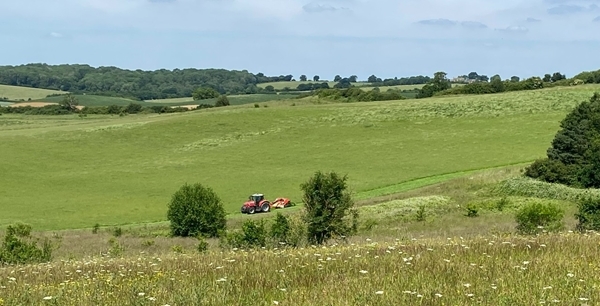
By Joe Stanley, Head of Training & Partnerships, The Allerton Project
4 minute read
It was a real pleasure to be involved in LEAF’s (Linking the Environment & Farming’s) Open Farm Sunday this year on 12th June. OFS is British farming’s national ‘open day’, running since 2006 and in that time seeing more than 1600 farmers welcome 2.7m visitors for free onto their farms to talk about what they do, why they do it and why people should care. This is an issue that regular readers will know I am passionate about – and the reason I wrote my book ‘Farm to Fork: the Challenge of Sustainable Farming in 21st Century Britain’ – last year.
People have busy lives and so many competing priorities, and especially at a time of rising inflation, increasing pressure on household budgets and a coming influx of cheaper, lower quality food resulting from new international trade deals, it’s never been more important to reach out and connect with our customers, the great British public.
This year we held a relatively intimate affair at the Allerton Project, with two groups of ticketed visitors who came to see our nature friendly approach to modern, conventional farming. It was, as always, great to talk through the issues and answer questions on our food system, but the most fun was to see the little children and their excitement at seeing a real sheep (or Jack Russel terrier) up close, or getting to sit in a big red tractor!
Some of the events across the country are massive, with hundreds or even thousands of visitors across the day. Put a note in your diaries for 11th June 2023 for the next event! Alternatively, if you weren’t able to make it this year but want to get involved, visit the LEAF Open Farm Sunday website to see a number of ‘virtual’ farm tours, including by me at the Allerton Project talking about arable cropping, soil health and farming sustainability.
One of the sights our visitors got to see this year was the shearing of our small flock of rare native Leicester Longwool sheep. Shearing is an essential task in the farming year, for as the heat starts to pick up as summer approaches you can imagine that being encased in a permanent woollen jumper would not be a pleasant experience. Shearing once a year helps avoid the risk of heat stress, while also giving sheep sufficient wool growth through the summer to avoid the risk of sunburn.
Perhaps more importantly, with their thick winter fleeces sheep are susceptible to ‘flystrike’, whereby flies can lay their eggs in muck or grime within the wool which then hatch and may burrow into the sheep itself, eating through its flesh. This is clearly something to be avoided at all costs, which is not only a major welfare concern but can clearly lead to the death of the sheep if not spotted and treated early.
Our visitors were surprised to hear that in recent years the shorn fleeces have been worth as little as £1 against a cost of £2 per sheep to shear them. When you consider that the economy of medieval England was built on the wool trade it’s shocking to think that today many farmers will compost or burn this wonderful, eco-friendly and sustainable natural resource rather than go to the cost of transporting it to sale, having already lost money on the shearing.
If we adjusted for inflation, a fleece sheared in 1970 should be worth at least £25 today – just one of the agricultural commodities which has plummeted in value over the past 50 years Today, cotton and nylon-based synthetic materials are just more popular (and cheaper at point of sale) despite their relative impacts on the environment.

One of my joys of recent weeks has been to visit our lone field of traditional hay meadow, where I was blown away by the profusion and diversity of plant species visible at this time of year, as well as the many species of butterfly and insect they were clearly sustaining. In this single five hectare field we have counted fifty-two species of grass, herb, legume and flower, with the field itself a rare survivor from the early twentieth century since when an estimated 97% of such ecologically diverse habitat has been lost to the intensification of farming methods and development across the UK.
Wistful names such as Yellow Rattle, Common Selfheal, and Sorrel give rise to a riot of colour and noise as pollinators flit from plant to plant on a warm summer breeze. This field, I’m told, was left ‘unimproved’ because it was for a long time rented out and lies at the top of a steep hill – the investment required in someone else’s field to boost its productivity wasn’t considered worth it – and thank goodness! Today it’s one of our most valuable farmland habitats.
This article first appeared in NFU Countryside
Please give what you can to support our vital conservation work
